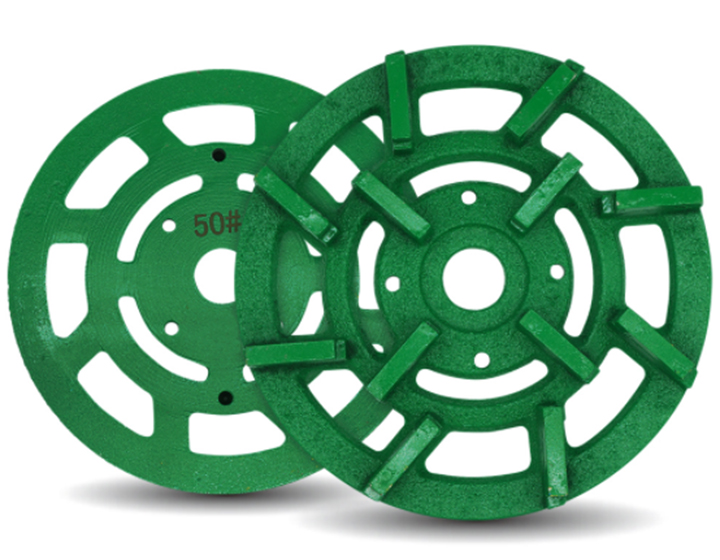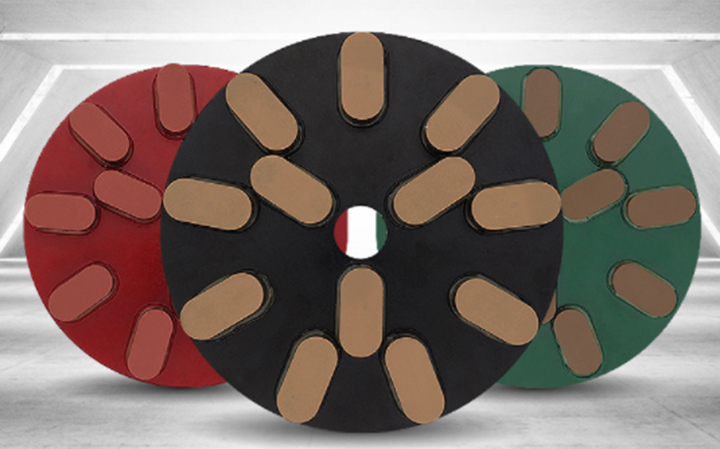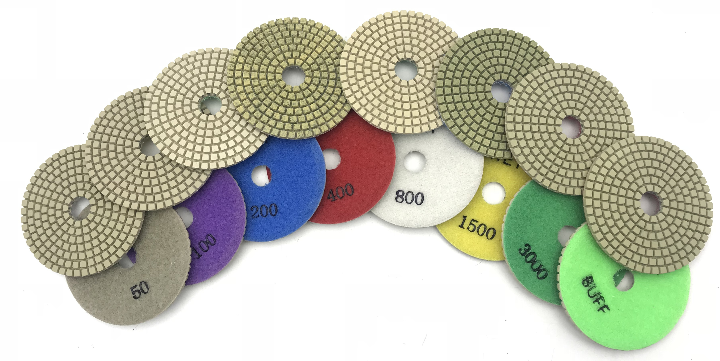Due to the different occasions, purposes and processing techniques of stone materials, abrasive brushes are currently used when polishing different specifications of non-glossy (rough surface) plates. The particle grit number ranges from 36# to 500#, and under normal circumstances, four grits of 36#46#, 60#, and 80# are used. 46# abrasive grain size is 425~355 (International Standard ISO, Chinese Standard GB2477-83), 80# is 212-180μm. Customary abrasives with a particle size of <63μm are micropowders, which is equivalent to the international standard 240# and the Chinese particle size number W63. In my country, it is generally believed that W28-W14 fine powder is used for fine grinding and rough polishing, and W10 is used for fine polishing and fine polishing. The basic particle size of W10 is 10-7μm. 500# is only equivalent to China’s W40, with a basic particle size of 40-28μm. From this point of view, the polishing of rough-faced stone by the abrasive brush is equivalent to rough polishing at best. This is the “polishing” characteristic of the rough panel stone by the abrasive brush. In order to overcome the scratch on the stone, the hardness of the abrasive tool should be soft, which is beneficial to the polishing; at the same time, in order to improve the gloss, it can be reduced. The amount of water, the method of increasing the rotation speed of the machine, and increasing the surface temperature will also promote the improvement of gloss. In short, the polishing of stone is a complex physical and chemical process. It has both physical micro-ploughing and pure chemical reactions on the surface. It depends on the situation and is by no means the same.
The following are various stone grinding and polishing discs for marble, granite, ceramic tiles and so on.
1. The metal bond grinding disc is made of diamond and metal powder after sintering. It is characterized by high processing efficiency and good processing effect. Generally, the number starts from 50#, and the coarse grain size 20# should be selected carefully, otherwise, coarser marks will appear. It is difficult to process the back of the mark. In addition, the finest particle size used does not exceed 400#. This tool is used to trim rough surfaces. It is the most effective tool. It can process a satisfactory plane. The cost is relative to the front. It is higher, but its processing efficiency is unmatched by ordinary grindstones.
2. The resin bond grinding disc is made of diamond single crystal, micro powder and resin. It is characterized by lower cost than metal and high processing efficiency. It is mainly used for fine grinding of stone, to polishing, after the metal grinding disc is flattened. Continue grinding and polishing tools. The cost is relatively moderate.
3.
Diamond flexible polishing disc is a new type of tool used for ground refurbishment in recent years. Its lightness and unique flexibility enable it to have a good fit to the machined surface. The particle size can be provided from 20#—3000#, and BUFF Black and white (polished). In this product, the grinding disc uses diamond as the abrasive, which is light in weight and can effectively protect the soft part of the stone surface during grinding. The processed product has high gloss; it is connected by Velcro, which is easy to operate. Its use, there is still good room for improvement.
If you would like to know more tools for grinding and polishing stones, welcome to view our website
www.bontaidiamond.com.



